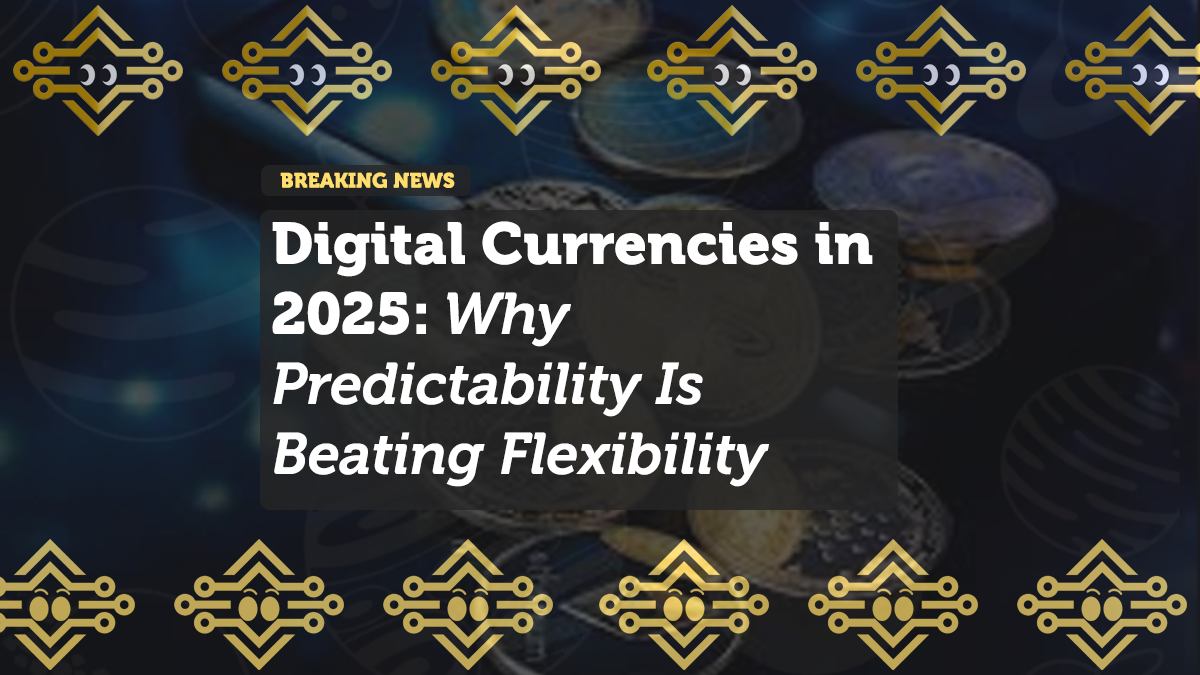
Digital Currencies in 2025: Why Predictability Is Beating Flexibility
In 2025, the world of money is being redefined—not by just one digital asset, but by three powerful contenders: Bitcoin, stablecoins, and central bank digital currencies (CBDCs). Each offers a distinct philosophy of what money should be. But one trend is standing out: the demand for predictability over flexibility.
At a time when rules can be reprogrammed, suspended, or manipulated, Bitcoin’s refusal to change may be its greatest strength.
Bitcoin’s Rising Dominance: Trust in Fixed Rules
Bitcoin dominance—its share of the total cryptocurrency market capitalization—hit 65% in May 2025, the highest it’s been in over four years. That figure tells a compelling story: investors are flocking to assets that play by fixed rules.
Unlike many cryptocurrencies that shift supply schedules, change consensus mechanisms, or experiment with governance structures, Bitcoin keeps it simple. Its monetary policy hasn’t changed since launch:
- 21 million BTC cap
- Halvings every four years
- No central authority
Compare that with Ethereum. After transitioning to proof-of-stake in 2022, it also altered its issuance and burning mechanisms. While innovative, this flexibility came at a cost—ETH has dropped 74% against BTC since the change.
Investors are beginning to ask: In a digital age full of programmable assets, where can you still find dependable monetary rules?
Adjustability Isn’t Always an Advantage
The rest of the crypto market often celebrates flexibility. Developers can tweak tokenomics, reissue tokens, or change governance structures with the push of a proposal. But flexibility comes with a price: uncertainty.
Here’s how that uncertainty manifests:
- Token supply increases dilute existing holdings
- Shifting consensus mechanisms create risk for long-term holders
- Protocol governance introduces politics into monetary policy
When assets can be reshaped, their long-term value proposition weakens. That’s where Bitcoin’s fixed nature becomes a refuge for capital seeking stability.
Stablecoins: Useful, But Not Without Trade-Offs
Stablecoins—especially USDT and USDC—have played a crucial role in global crypto adoption. In 2024 alone, Tether processed over $20 trillion in volume.
They serve as:
- A hedge against local currency collapse in emerging markets
- A bridge between fiat and crypto for traders and remittance users
- A tool for peer-to-peer commerce without bank involvement
But stablecoins are only as stable as their issuers allow them to be.
Risks include:
- Freezing of accounts and blacklisting (Tether has done this multiple times)
- Regulatory compliance pressure, especially in the U.S.
- Inflation drift, since they track fiat currencies losing purchasing power over time
While they offer short-term utility, stablecoins are not trustless. They inherit the risks of the traditional system—centralization, censorship, and depreciation.
CBDCs: Efficiency or Control?
Central bank digital currencies are being rolled out around the globe:
- Nigeria launched the eNaira
- China expanded its digital yuan pilot
- The EU is expected to finalize its digital euro framework by the end of 2025
These projects promise:
- Streamlined payments
- Reduced cash handling
- Better control over monetary policy
But they come with a steep price—state control over individual spending.
Some experiments have already tested:
- Expiry dates on funds (to encourage spending)
- Geo-fencing for purchases (restricting where money can be spent)
A recent UK survey by Trezor found that 73% of respondents fear CBDCs give too much control to governments—especially the power to freeze accounts or monitor behavior.
CBDCs could redefine money—but not necessarily in a way that preserves freedom.
Bitcoin as a Strategic Hedge in a Controlled World
With centralization rising, institutions are turning to Bitcoin for its uncensorable, predictable structure. Consider:
- Public companies like Strategy now hold over 568,000 BTC, viewing it as a core treasury reserve
- U.S. states like Arizona and New Hampshire are exploring Bitcoin reserve frameworks
- Institutional Bitcoin ETFs have attracted billions, legitimizing BTC as a regulated asset
Why? Because in a world of programmable and recallable money, Bitcoin offers:
- Transparency
- Final settlement
- Unchanging supply and rules
It’s the digital equivalent of a monetary rock—unchanged by political pressure, immune to central bank whims.
Conclusion: The Future Is Fixed
The story of money in 2025 is no longer just about innovation. It’s about who controls the rules—and whether those rules can change.
- Stablecoins offer short-term stability, but are subject to issuer control and inflation.
- CBDCs provide efficiency at the cost of surveillance and programmability risk.
- Bitcoin stays fixed—no gatekeepers, no override switches, no reprogramming.
As people and institutions navigate this new landscape, the choice is becoming clear: predictability is not a weakness—it’s a competitive edge.










